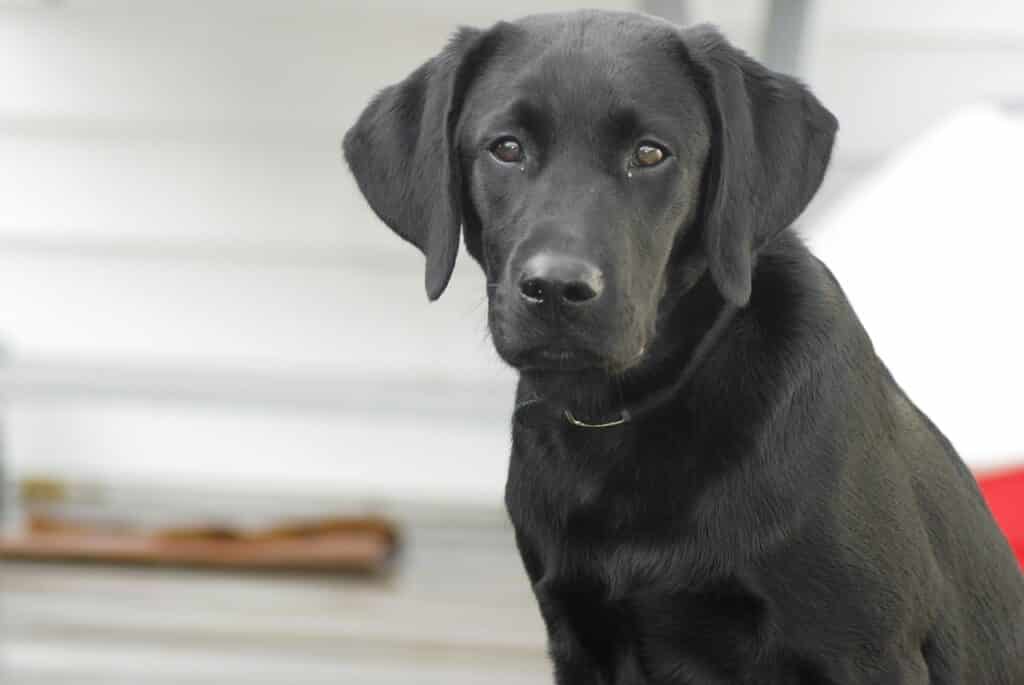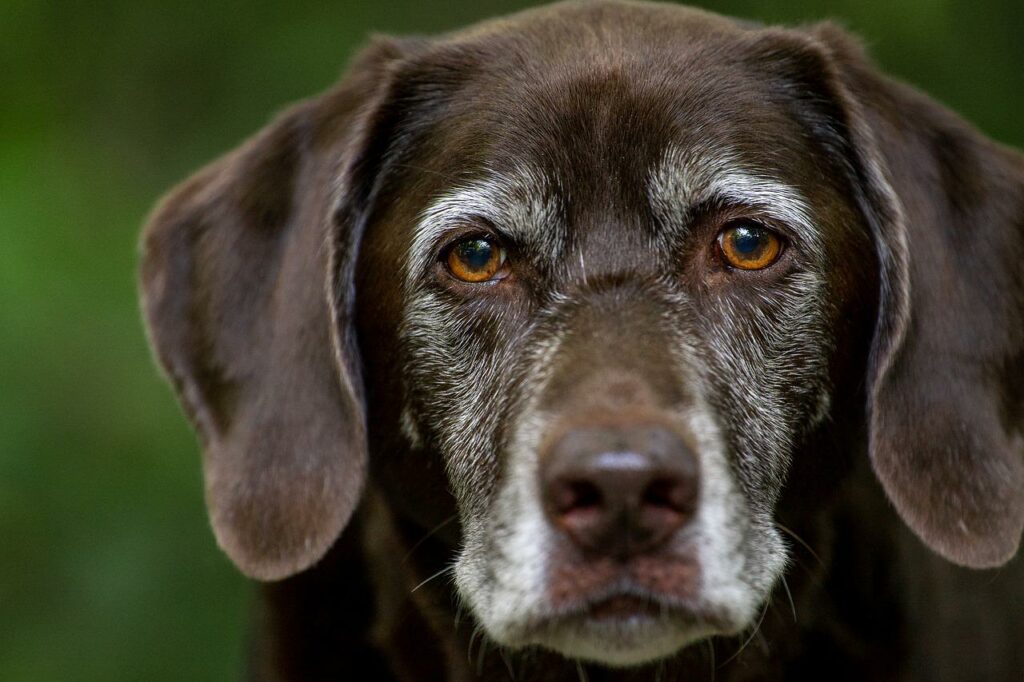If you’re a Labrador lover like me, you will agree that they are one of the best breeds out there.
However, if you’re thinking of getting a Lab, you probably have one big question on your mind: Do labrador retrievers shed?
Well, worry not; we are here to set the record straight.
So, do labradors retrievers shed?
Yes, Labrador Retrievers are heavy shedders.
They continuously shed their hair throughout the year and lose more of it during their molting seasons.
Fortunately, there are effective tactics to reduce and control their sheddings, such as frequent bathing or grooming.
This article will go through everything you need to know about Labrador Retrievers shedding characteristics and strategies for dealing with them.
Read on to get the full coverage.

How do Labrador Retrievers shed?
Shedding is natural for all dogs.
They shed their old coat to make way for the new one.
Labrador Retrievers are double-coated; they have an outer coat (guard hair) and an undercoat (down hair).
The undercoat is denser and softer than the outer coat.
Labradors will lose their undercoat twice a year – once in the spring (to change into their lighter summer coat) and again in the fall (to change into their thicker, warmer winter coat).
These are their molting seasons.
They will shed some hair at other times of the year, but it will be much less than during molting season.

What are the best ways to deal with Labrador Retriever shedding?
There is no one-size-fits-all solution to dealing with Labrador Retriever shedding.
The best approach depends on your circumstances, such as how much your dog sheds and what effective strategies work for them.
There are several methods for dealing with Labrador Retriever shedding explained below.
These strategies will either reduce the amount of shedding or help keep everything under control.
They include:
Bathing your dog regularly
Regularly bathing them will help remove loose hair from their coat and skin.
While bathing your Labrador, use a dog-specific shampoo and conditioner to avoid stripping their coat of natural oils.
The best bathing products are made from natural products such as oatmeal or aloe vera.
These are preferable to harsh chemicals; they will handle your dog’s skin and coat more naturally.
Rinse the dog after using shampoo to avoid any irritations that its residue may cause.
Brushing your dog’s coat regularly
Brushing their coat will help remove loose hair and prevent matting and tangling.
It’s best to use a brush for double-coated dogs, such as a slicker or pin brush.
Brush in the direction of hair growth to avoid damaging your dog’s coat.
Using a deshedding tool
A deshedding tool is a unique grooming item that helps remove loose hair from your dog’s undercoat.
Deshedding tools can reduce shedding in your dog, but you must use them correctly to avoid harming your pup’s skin.
There are several deshedding options to pick from.
Choose one that is tailored to your dog’s needs.
If unsure which option to pick, get advice from a professional groomer or your veterinarian.
Feeding your dog a healthy diet
A healthy diet is essential for all dogs, but it can be beneficial for reducing shedding.
Well-nourished dogs are less likely to shed excessively.
Generally, foods rich in omega 3 or six fatty acids are the best for maintaining your pup’s skin and coat, ensuring they minimize the amount of hair loss.
Talk to your veterinarian about the best foods for your Labrador Retriever.
Giving your dog supplements
Several supplements can help to reduce your pup’s shedding.
Those significant in controlling shedding contain omega-3 or six fatty acids, vitamin E, and biotin.
These nutrients are essential for maintaining your dog’s healthy coat and skin.
Are there factors that trigger Labrador Retrievers shedding?
Several factors can trigger labradors to shed, such as:
- Age: Older labradors shed more than younger ones. This can be attributed to their hormonal changes as they age.
- Gender: Males typically shed more than females. This is due to their testosterone levels (higher in males). Testosterone is known to stimulate hair growth.
- Breed: Some breeds of dogs shed more than others. For example, double-coated Labradors shed more than single-coated breeds. The double-coated breed sheds more because they have two layers of fur, the undercoat, and the topcoat, which both shed. A short coat also means less surface area for the hair to fall out hence lesser shedding.
- Season: Seasonal changes can also trigger shedding. For example, Labradors shed more in the spring as they prepare for the summer months. This is due to the warmer weather and longer days, which stimulate hair growth.
- Stress: Stress can also cause dogs to shed more. If a dog is experiencing anxiety, their bodies will produce more cortisol hormone, which can trigger shedding.
- Health conditions: Certain health conditions can also cause Labradors to shed more. These include:
Cushing’s disease – This is a condition where the body produces excess cortisol hormone. Cortisol can trigger shedding, so dogs with Cushing’s disease shed a lot.
Hypothyroidism – This is a condition where the body produces too little of the hormone thyroxine. Thyroxine regulates hair growth, so dogs with hypothyroidism often have thinning hair and shedding.
Alopecia – This is a condition that causes hair loss. Different alopecia types can cause dogs to shed excessively.
Frequently asked questions (FAQs)
When does a Labrador Retriever shed?
Labradors shed year-round, but hair loss increases seasonally, occuring in the spring and fall.
Are there non-shedding Labradors?
No, all Labradors shed. However, some breeds shed more than others.
For example, double-coated Labradors shed more than single-coated breeds.
Are there non-shedding dogs?
There are no completely non-shedding dogs, but there are breeds that shed less than others.
For example, Poodles and Bichon Frises are two breeds of dogs that shed less than Labradors.
This is because they have a single coat of hair instead of double.
They also have a shorter coat, meaning less surface area for the hair to fall out.
Could my Labrador’s excessive shedding be caused by something uniquely identifiable?
Yes, it’s possible that your dog’s shedding is linked to a condition affecting them alone.
If you want to be sure about your dog sheds, have them checked by a veterinarian.
Do female Labradors shed during pregnancy?
Yes, female Labradors often shed more during pregnancy.
This is due to the hormonal changes that occur during pregnancy.
The hormone progesterone can trigger shedding, so that pregnant dogs may shed a lot.
Conclusion
Labrador Retrievers are a heavy shedder, but those with single coats will shed less than those with a double.
Additionally, the amount of hair your Labrador sheds depends on how you care for them.
Regular grooming and control tips will help remove loose hair from their coat, thus reducing shedding.
It’s feasible to enjoy worry-free company with your dog without the fear of shedding.
- What Dog Breeds Have Pink Skin? - March 24, 2023
- What Are the Most Inspiring Dog Breeding Quotes? - March 20, 2023
- Can Pheromone Spray Help Improve Dog Breeding Results? - March 19, 2023








